tourist spot in zamboanga city santa cruz islands
SANTA CRUZ ISLANDS
Pink Beach (Sta. Cruz Grande Island)
Off the coast of Zamboanga Peninsula lies an island that, when kissed by the sun, glows with a natural rosy blush. Hailed by the National Geographic as one of the World’s 21 Best Beaches in 2017, Pink Beach is Zamboanga City’s most popular tourist attraction.

To manage your expectations, the pink hue isn’t vivid or bright. From afar, the sandy shore looks like the usual white beach, but the closer you get, the pink taint becomes more apparent. The sand’s pale pink tint is the result of the weathering of the red organ-pipe corals (tubipora musica) that were brought to the shore by the waves.
Punctuating the southeastern side of the peninsula, Zamboanga City’s Paseo del Mar is the main jump-off point to the island and its Pink Beach. Visitors can hire a tricycle from the city center to Santa Cruz Island Ferry Terminal in Paseo del Mar. The boat ride takes about 20 minutes.
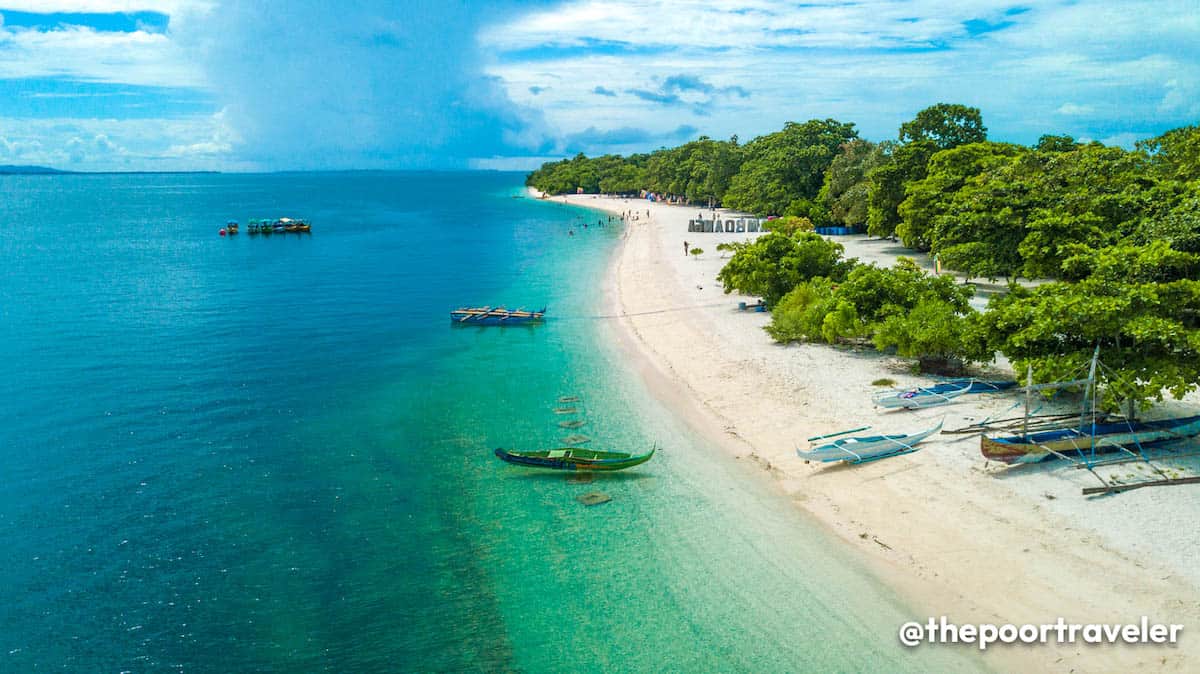
Because the number of visitors is strictly regulated, you need to register in advance before going. Registration and boat service start at 7:00 AM. Overnight stay is not permitted and only day tours are allowed.
Boat fee is P1000, good for up to 10 passengers. If your group is smaller, you’ll still need to pay the same amount.
Mangroves Boat Tour (Sta. Cruz Grande Island)
While Grande Santa Cruz Island allures with its pink radiance, its beauty goes beyond appearances. It also keeps a trove of natural wonders. On the other side of the island is a lagoon fully adorned with mangroves, nourishing wildlife and promoting biodiversity.

The lagoon actually dominates the whole island, occupying most of the surface. The best way to explore it is to take a guided boat tour. As your boatman paddles, a guide will lead you to a number of spots to explain just how important it is to protect this site. You’ll learn about the types of mangroves and meet upside-down jellyfish. Don’t worry, they’re not dangerous at all. They’re virtually stingless. But please don’t get them out of the water.
To join a lagoon boat tour, tell the boatmen that brought you to Pink Beach that you want to explore the lagoon. They will take you to a small community near the entrance to the lagoon. This transfer will cost you an additional P200.
Here, you’ll be transferring to a smaller “yellow boat.” Rental of each yellow boat costs P300, good for 2 passengers. Any given boat will be accompanied by 2 paddlers, each from a different family. (It’s a way of making sure everyone in the community benefits from the program.)
Tour guide fee is P300. A tour guide can lead up to 5 boats max. You can team up with other boats so you could split the guide fee.
Important: you can only arrange a tour before 12 noon! They won’t be accepting any booking beyond that time. Please follow the rules and regulations when exploring. The Grande Santa Cruz Island, together with the smaller Little Santa Cruz Island, is a protected area.
Here’s a summary of the lagoon tour expense.
Boat to entrance: P200 (boat can accommodate up to 10 pax)
Yellow paddle boat rental: P300 (good for 2 pax)
Tour guide fee: P300 (good for up to 5 boats)
Vinta Rowing
The vinta is the traditional outrigger boat that is common in Mindanao, especially in the areas of southern Mindanao, Sulu archipelago, and the Zamboanga peninsula. It is famous for its vividly colorful rhombic sail, adding a splash of color to the waters of Sulu Sea.

The vinta plays an important role in the livelihood of the locals — economy, trade, and transportation. It is historically used as a fishing vessel. Today, it also serves as a mode of transportation for people, as a cargo vessel to deliver products/goods, and as a tourist attraction.
If you want to experience rowing or riding a vinta, you may charter one in any of the barangays along the city’s coastlines or you can do it when you visit Grande Santa Cruz Island.
Little Sta Cruz Island & Sandbar
Sitting northwest of Santa Cruz Grande Island, Little Santa Cruz Island is like a quick dash of paradise off the coast of the Zamboanga peninsula. The most recognizable feature of the island is the sandbar trailing on the easternmost point.

Although the island is fringed with fair sand, it is a mixture of fine and broken shells and corals. There are small lagoons, but tourists are not allowed to venture beyond sandbar. The surrounding waters are mostly deep, sea-grass-covered, and are not recommended for leisure swimming.
Visitors are only allowed to stay here for 10 minutes. But if you really want to make a stop here, a detour will cost you an additional P200.
Jump-off Point: Paseo del Mar (Santa Cruz Island Ferry Terminal)
Additional fee if making a stop here: P200
ONCE ISLAS CRUISE (11 Islands)
A steadily rising tourist attraction is Once Islas (11 Islands), a string of islands and islets off the eastern coast of Zamboanga City. Not all islands are open to the public, but those that are accessible are great for swimming, sunbathing, and further exploring. There are designated snorkeling spots for those who want to take a peek into the underwater scene. Buh-Buh, Bisaya-Bisaya, Baung-Baung, and Sirommon are those that are accessible to the public.
The islands are only open for day trips. A limit of 200 visitors per day is implemented, so advance registration is required. You need to book online through onceislas@gmail.com one week before your planned visit. Guidelines and steps will be emailed upon booking inquiry. Walk-ins are not entertained.
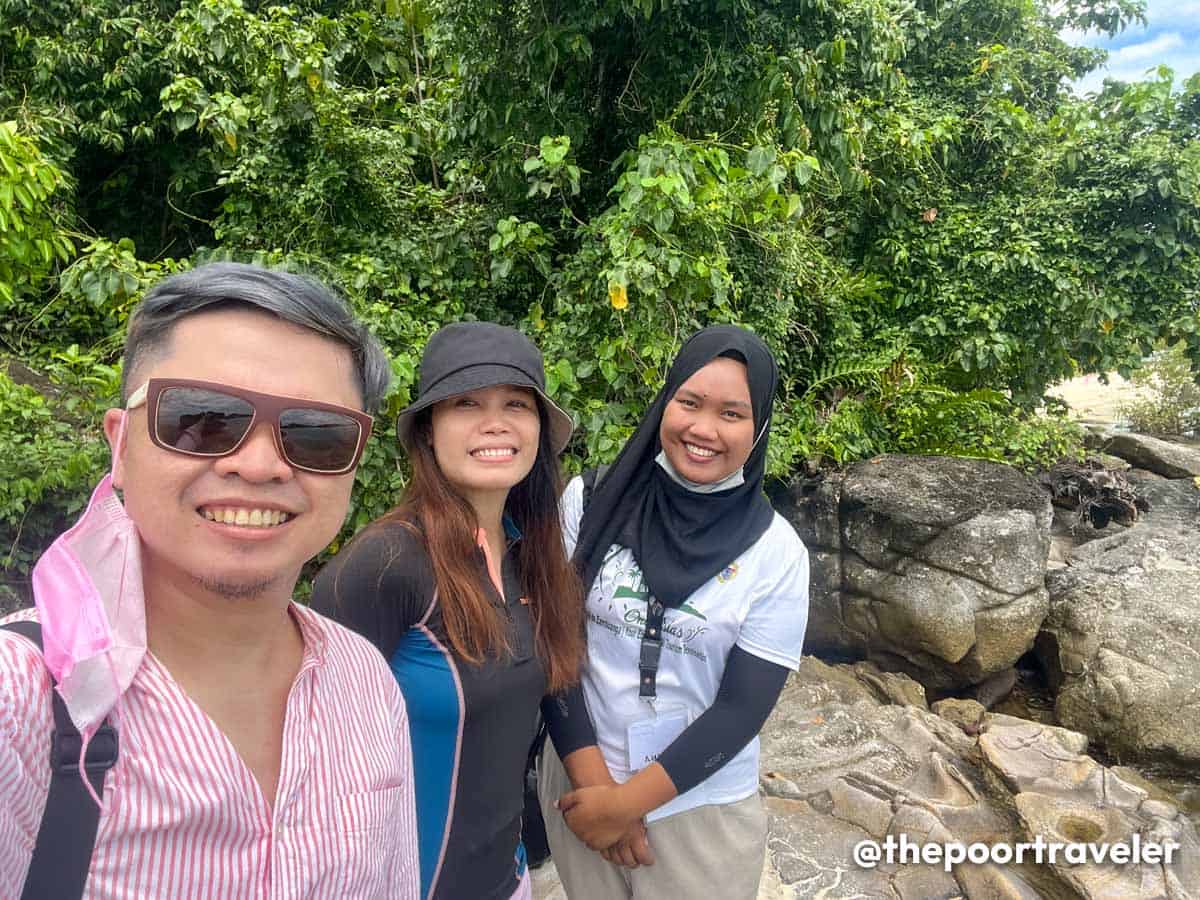
The jump off point is the Panubigan Ferry Terminal, roughly 1.5 hours from the city center.
Bisaya-Bisaya Island
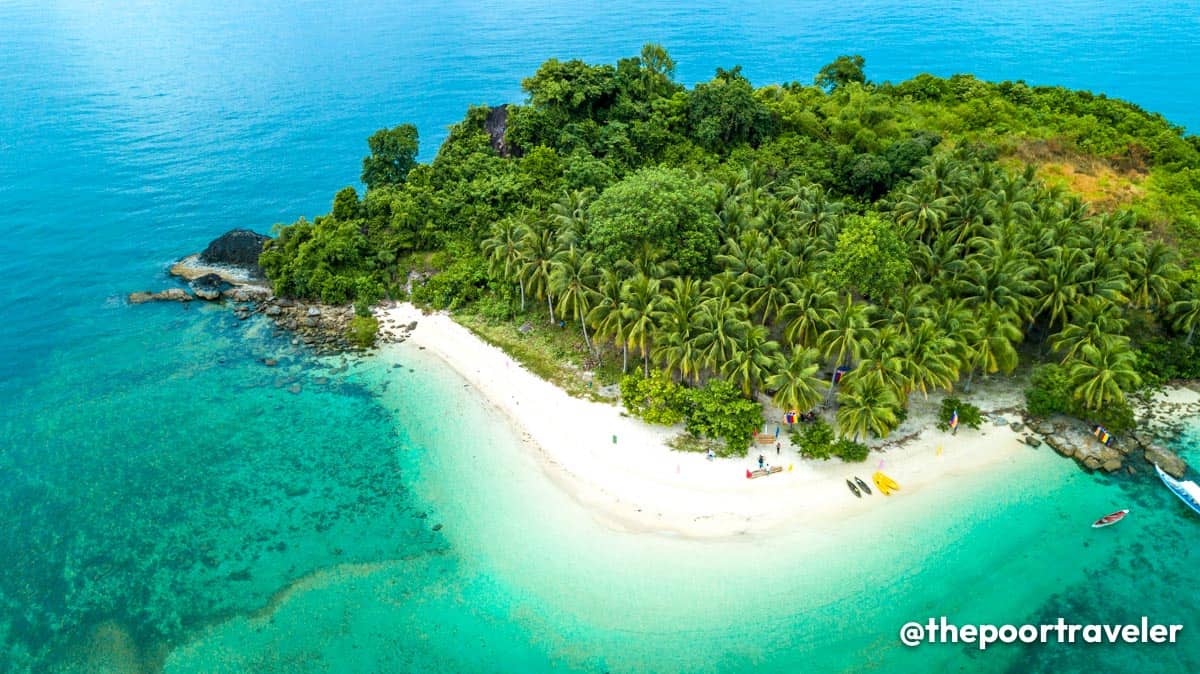
Bisaya-Bisaya Island is a two-faced island, with steep cliffs on one side but blanketed with fine white sand on the other. Its northern face is where you’ll find the sandy stretch, fringed with palm trees. From above, the beach area resembles a boomerang on patch of grass. In between the trees are a few huts where you could stay and enjoy coconut juice, which is for sale on site.
Not too far away is a smaller islet often dubbed a child of Bisaya-Bisaya. This one’s generally more rocky and jagged. It features a small natural pool that gets filled by the waves at high tide.
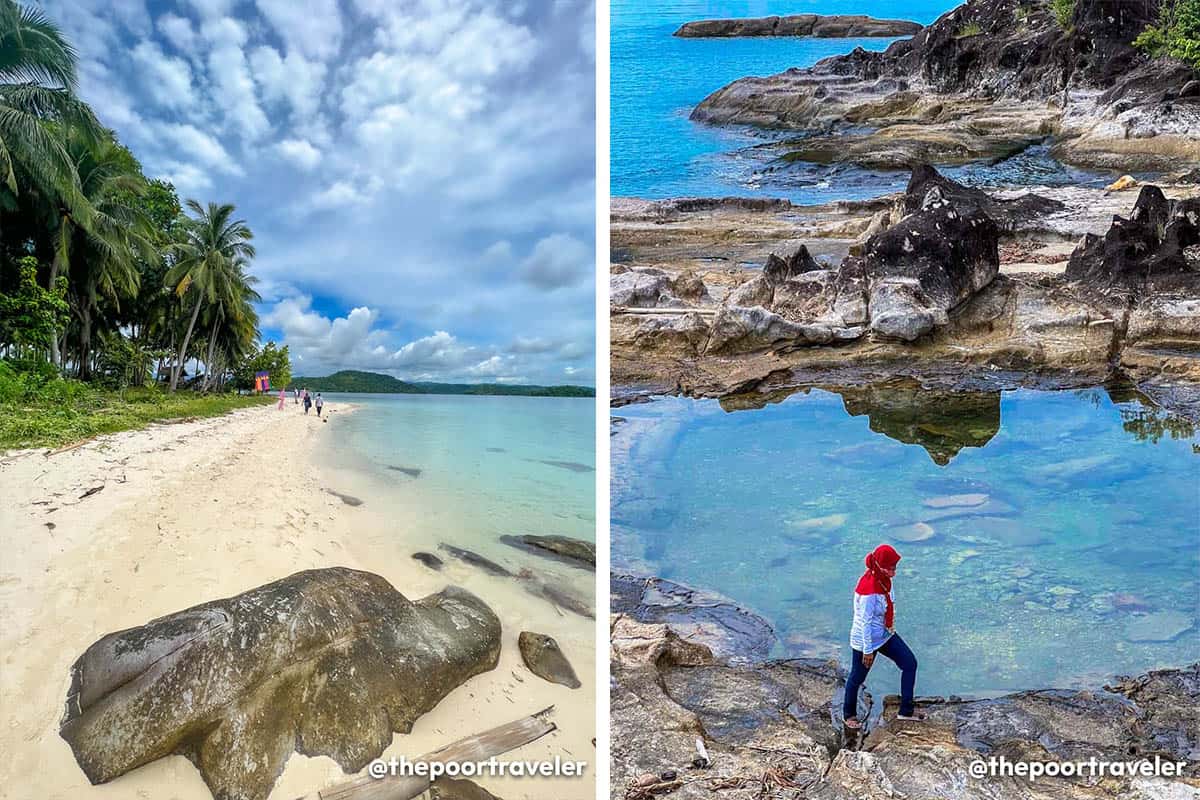
Our guide Sirna shared with us a folk tale about two fishermen, a Christian and a Muslim, who once stumbled upon the island that blessed them with fish. But the two did not agree on how they would divide the ocean bounty — since one of them caught much more than the other — so they decided to go their own way. According to our guide, “bisaya-bisaya” is the local term for “kanya-kanya” or not sharing.
Baung-Baung Island
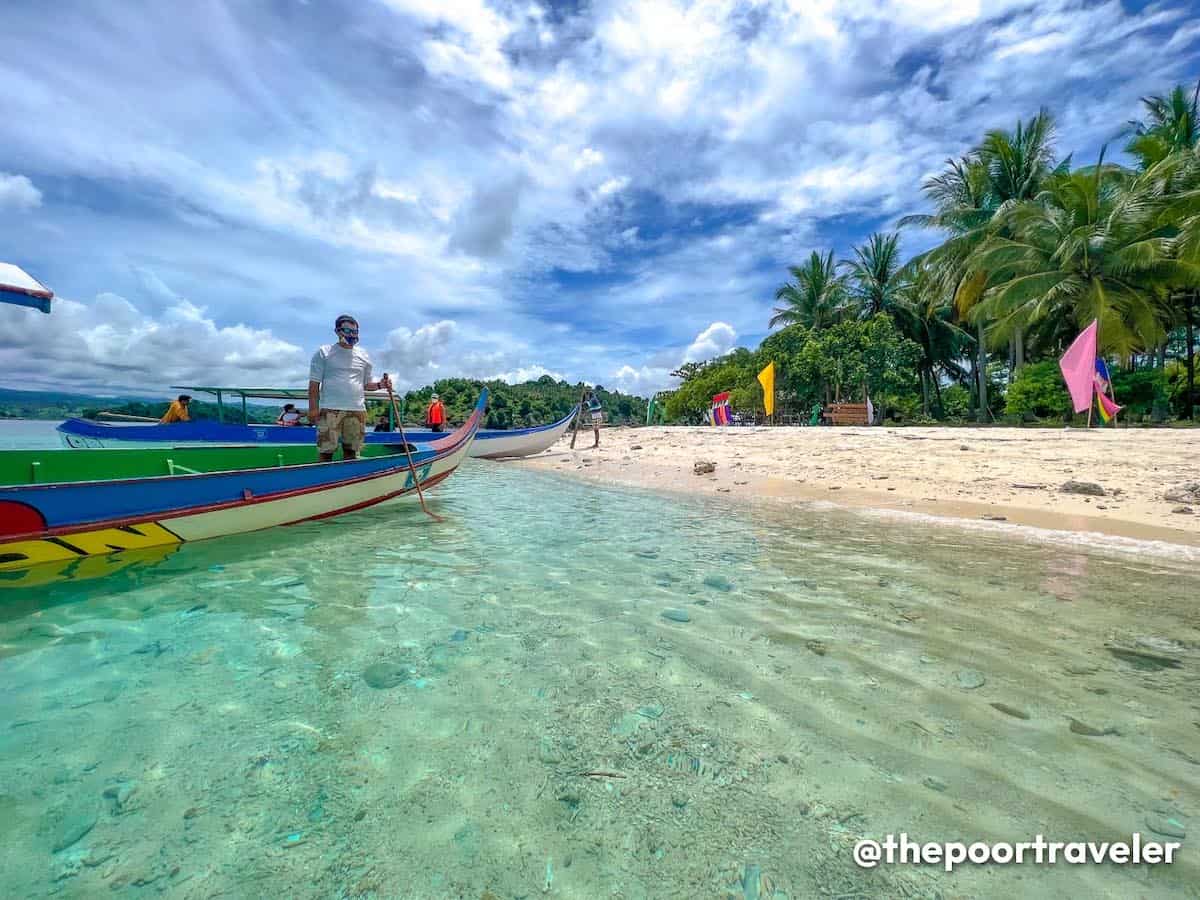
Baung-Baung Island is an almost rectangular island whose southwestern end shimmers with its fine white sand. It’s usually the stop right after Bisaya-Bisaya because of its proximity to it. In fact, Baung-Baung has a trekking trail that will lead you to a viewpoint that affords a majestic view of Bisaya-Bisaya and the other islets around it. On Google Maps, it’s marked “Baong Island”.
Sirommon Island
Sirommon Island is the usual lunch stop for boat tours; thanks to its spacious huts. It also has a wide strip of white sand and a sand bar, which is probably why most tourists spend the most time here. It’s also a great snorkeling stop.


Buh-Buh Island
Buh-Buh Island is best known for its beachfront mosque. Pre-pandemic, tours would make a stop here, but we’re not sure whether or not it’s still the case. We didn’t set foot here, though.

But what makes the beach pink? Well it is because of the crushed red corals known as organ pipe corals (Tubipora musica) that blend well with the sand making it look like color pink specially on broad daylight. If you walk along the beach, there’s a good chance that you’ll see these corals that are washed ashore.

The waters surrounding the islands are protected area teeming with vivid marine life, an ideal site for scuba diving and snorkeling. The City Tourism Office have dive guides and can also arrange the dive prior to reservation, you may contact Dive Master Raymond of DoT Zamboanga at +63926-3721457. There is no accommodation on the island and camping isn’t allowed.

How to Get to Santa Cruz Island
Guests who wish to visit the island can go to City Tourism Office in Zamboanga City’s Paseo del Mar, prior reservation is not required. The boat costs P1,000 round trip, good for 1-10 people, additional P100 per person is charged in excess of 10. Entrance fee of P20 and terminal fee of P5 are also collected for every guest. There are also cottages in the island that can be rented: P100 (small, good for 6 persons), P200 (large, good for 10 persons) and P500 (pavilion, good for 15-30 persons). Expect to have armed police officers to guard and assist you during your trip.
Mga Komento
Mag-post ng isang Komento